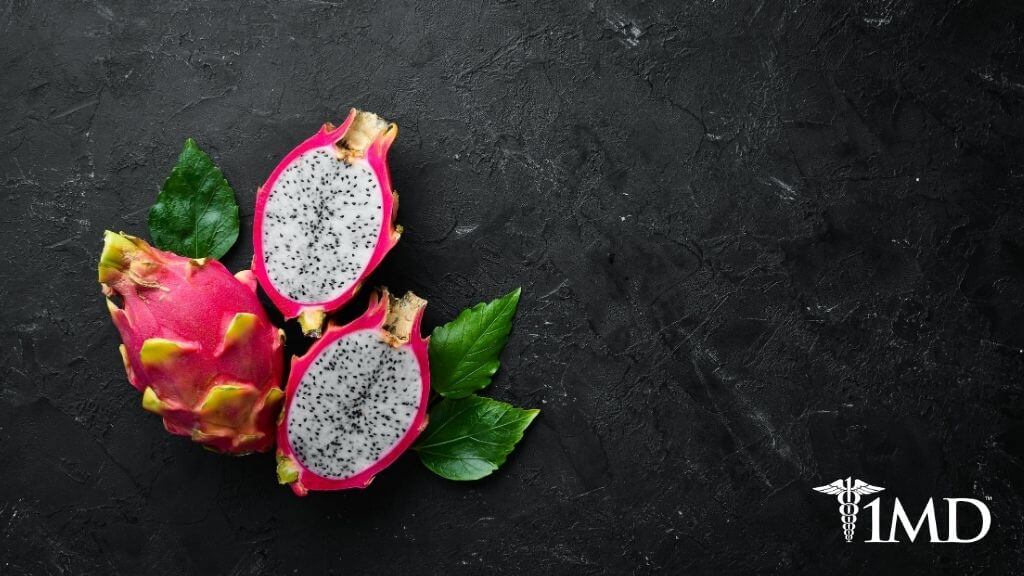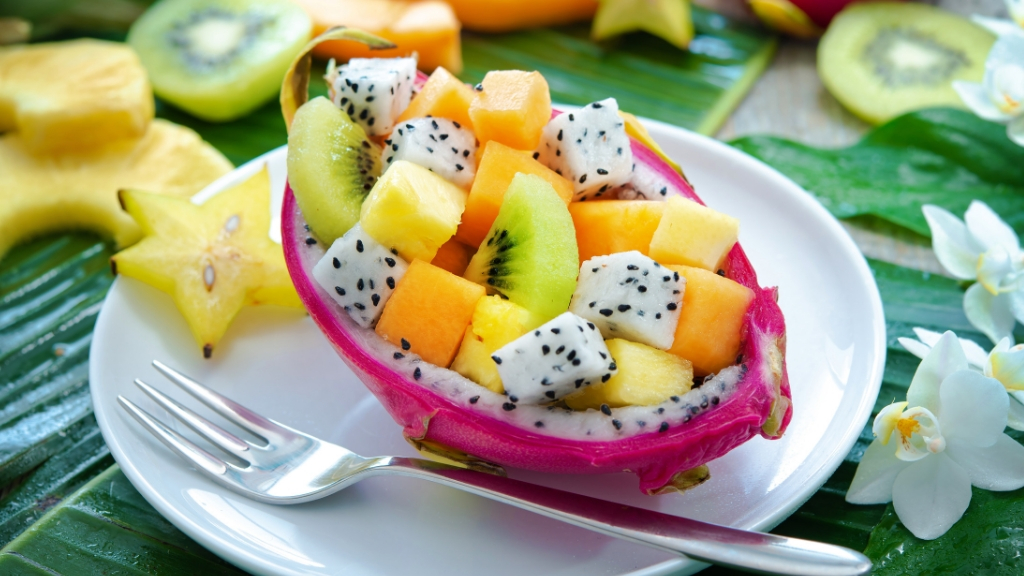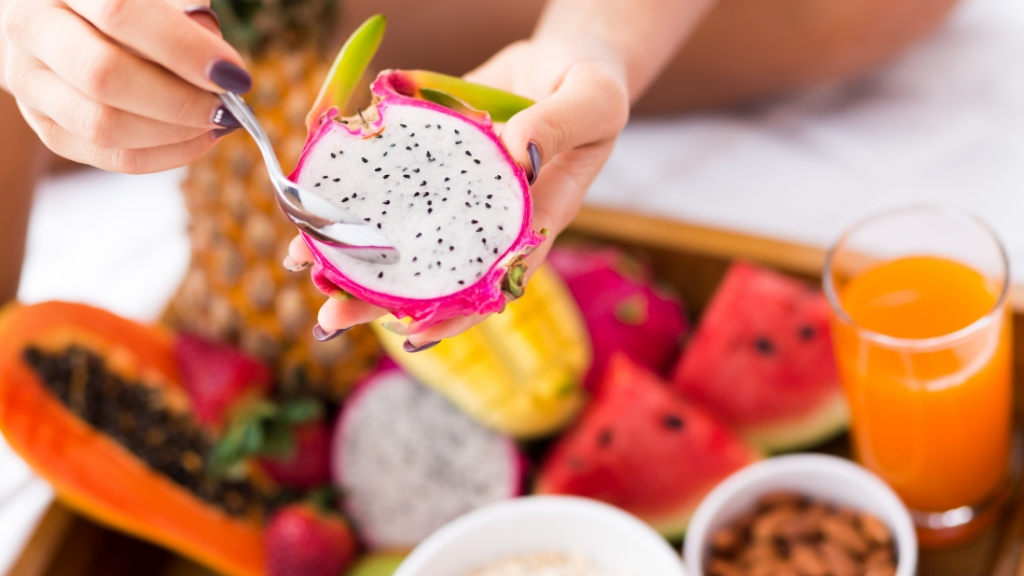Is Dragon Fruit a Superfood? Health Benefits + How to Buy & Eat Them
7 minute read
Whether you call it pitaya or dragon fruit, one thing is for sure—this plant is one of the most unique on the planet. With bright pink fruits and flame-like flowers, the dragon fruit is both exciting and exotic.
Native to Central America, the dragon fruit is widely known across the globe, mostly because of its dramatic appearance. Knowing the name is one thing, but many people still wonder what exactly it is good for.
What is the dragon fruit?
Surprisingly, the dragon fruit is a member of the cactus family, which means it has a succulent stem that provides moisture for the fruit in the arid climates where the plant is commonly found. The fruits slightly resemble pineapples with their soft spikes, and the skin can be either pink, red, or yellow.
The flesh of the dragon fruit is red with small, black edible seeds. The taste of a dragon fruit is a combination of pear and kiwi.
Despite being eaten in other countries for centuries, the dragon fruit is relatively new to Western culture. Its uniqueness has gained, it attention but the health benefits have earned it the title of superfood.
Among the health-conscious population, dragon fruit is a big hit. As popularity increases, this fruit is now widely available at most stores, fresh or frozen, so you don’t need to travel to the tropics to enjoy what it can do for you.

The key health benefits of the dragon fruit come from the high content of phytonutrients. These are natural chemicals found only in plant products that have proven over time to be beneficial to human health.
The chemicals are designed to protect the plants from germs, fungi, bugs, and other threats, but are a great source of disease protection in humans. The combination of phytonutrients and other attributes is sure to have you joining the health-conscious club in no time.
The dragon fruit is full of valuable vitamins and minerals as well as a good dose of dietary fiber. Offering the antioxidant protection of vitamin C and E, dragon fruit can protect against oxidative damage while the B vitamins it contains are essential for efficient carbohydrate metabolism.
There is also a good amount of calcium to promote bone and teeth health, iron to ensure your red blood cell production is healthy, and phosphorus to promote healthy tissue growth and repair.
What Dragon Fruit Can Do for You
The essential nutrients found in dragon fruit make it a good addition to any balanced diet. The subtle sweet taste also makes it perfect for those that need to curb sugar cravings without the unhealthy snacks.

Whether you eat it as a snack or a dessert, the dragon fruit can benefit your overall health in a variety of ways.
Fight Chronic Disease
The antioxidant content is what allows dragon fruit to eliminate free radicals that cause tissue damage and disease. In doing so, dragon fruit can help to protect against heart disease, diabetes, cancer, and arthritis.
The most potent antioxidants in the dragon fruit are vitamin C, betalains, and carotenoids.
Vitamin C: Linked to reduced risk for cancer, specifically head and neck cancers.
Betalains: Especially good at combating free radicals and suppressing the activities of cancer cells.
Carotenoids: A group containing beta-carotene and lycopene, gives the fruit its delightful color and ability to reduce heart disease and cancer.
Stronger Immune System
What you eat has a strong impact on your body’s ability to fight infection and disease. The vitamin C in dragon fruit provides a lot of support to your immune system and prevents infection by protecting your white blood cells.

These cells are charged with attacking pathogens, but, because they are sensitive to free radicals, they benefit from the extra protection.
Great Magnesium Source
Magnesium deficiency is common in the United States, which is dangerous because magnesium is critical to health. This mineral helps to breakdown food into energy, aids muscle contraction, supports bone formation, and plays a role in the production of DNA.
Promote Gut Health
The trillions of bacteria living in your gut help to promote digestion and immunity. Because there are potentially harmful strains too, the balance always needs to stay in favor of the beneficial ones.
The dietary fiber in dragon fruit feeds these bacteria so they can multiple any continue protecting your gut. This fiber (a type of prebiotic) promotes the specific growth of lactic acid bacteria which reduce the risk for digestive infections and disease.
By promoting the health of your gut bacteria, dragon fruit can protect from inflammation, leaky gut syndrome, and autoimmune disorders.
How to Eat Dragon Fruit
Since you may not be familiar with dragon fruit but are interested in adding it to your diet, it would be useful to know how to eat the fruit.

You can simply cut the fruit in half and scoop out the flesh with a spoon
You can carve the flesh out, cut into cubes and add to a salad (raw or lightly grilled)
Scoop out the flesh and add to yogurt in a blender for a delightful smoothie
Before you buy, make sure you find the right fruit. The skin should be bright pink or red and you need to test the firmness to evaluate how ripe it is.
| Related: The 5 Best Probiotic Foods You’ve Never Heard Of |
A firm touch should be left for a few days. If it is extra soft, then it is over ripe. Also avoid any that have blotches or brown spots on the outer surface.
The Bottom Line
The dragon fruit is unique and nutritious and a wonderful health benefit for the Western world. If you have not yet tried one, it is highly recommended. Not only can you make your fruit salads and snacks more exotic with this addition, your health can benefit from the many valuable properties this fruit holds.
They can be found in stores and now you know how to eat them. Nothing should be holding you back. Go out and try dragon fruit today and reap the benefits tomorrow.












